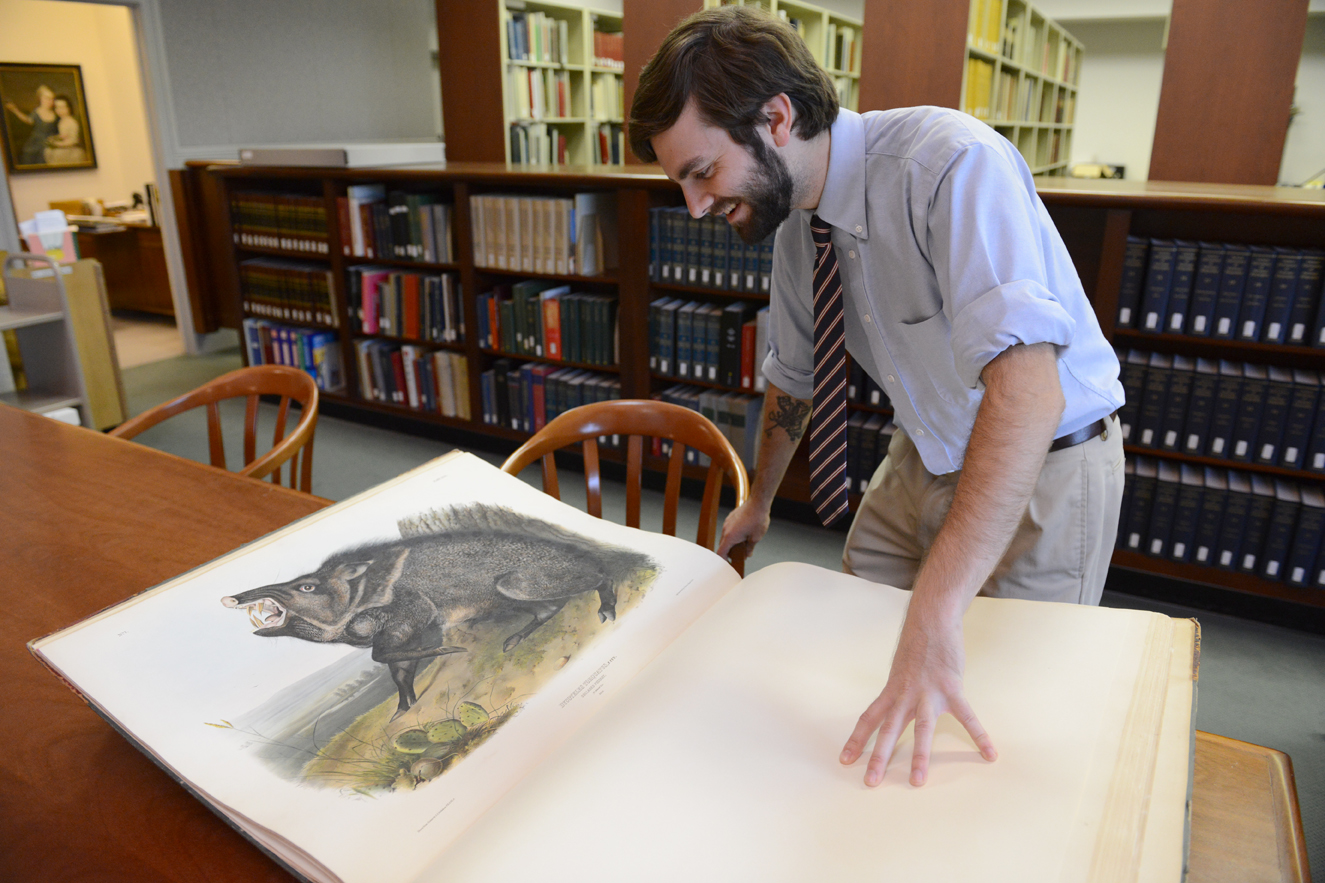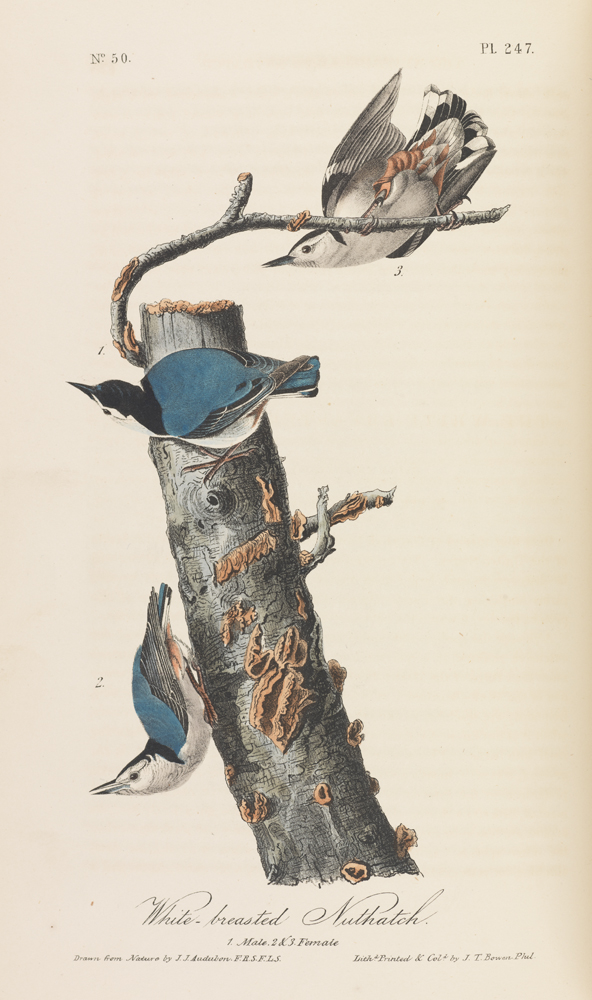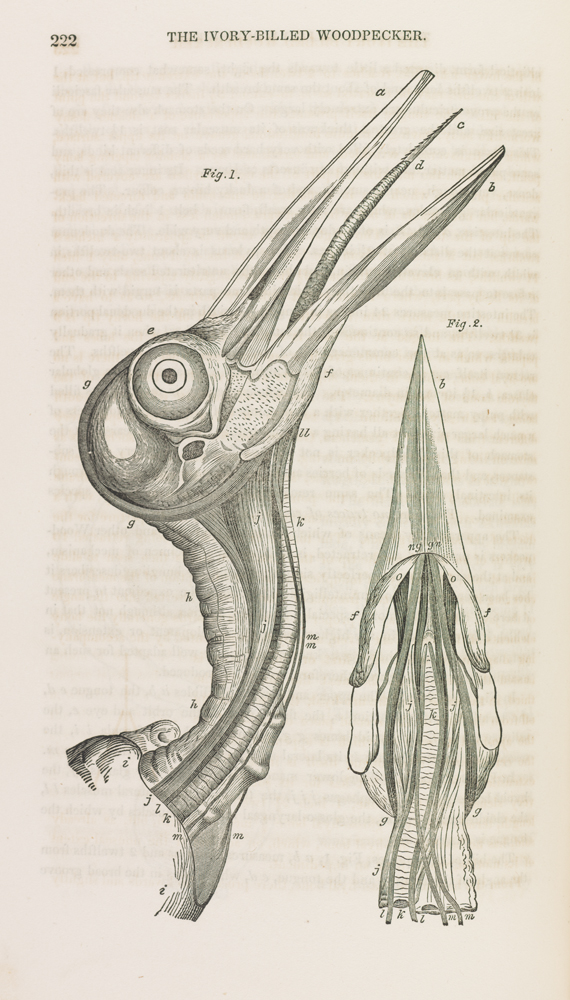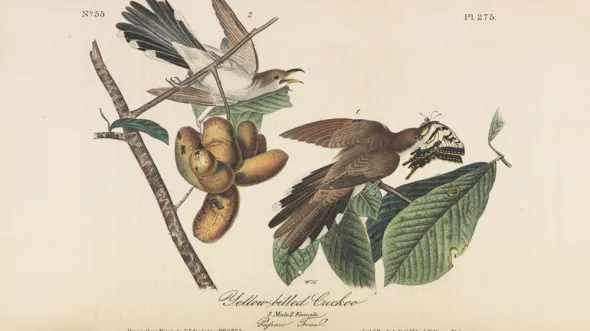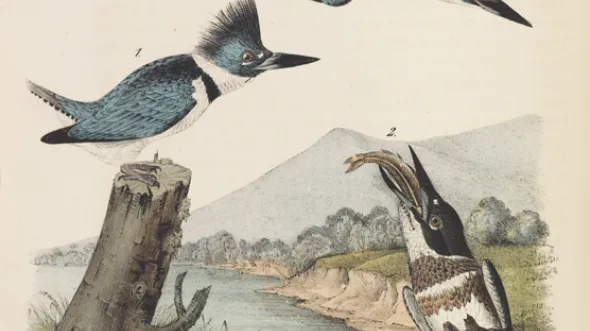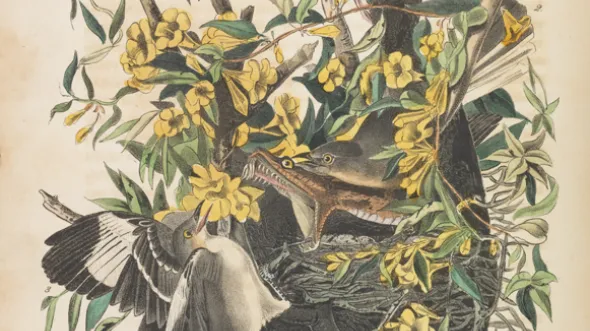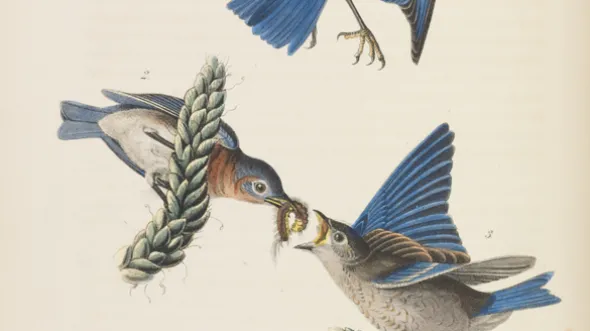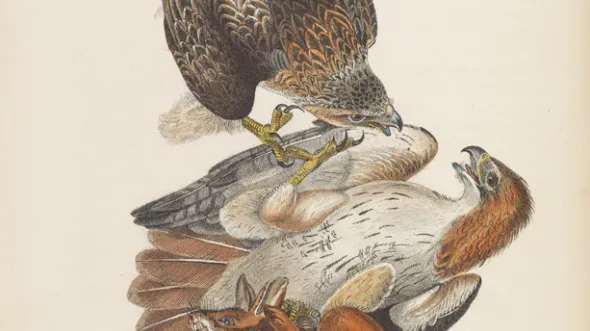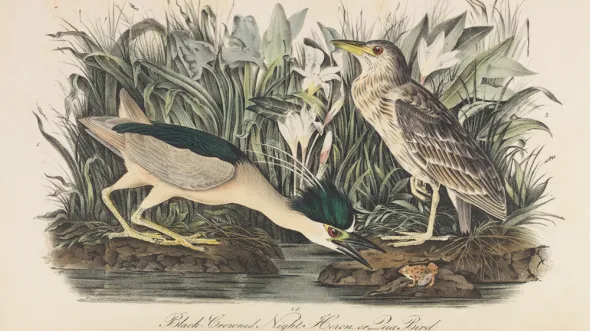John James Audubon’s pioneering contributions toward natural history, art, and conservation are still extremely influential today. In the VMHC collections are several rare editions of his work, including a first edition of Viviparous Quadrupeds (Rare Books folio QL715 .A916 1845) and the 1st Octavo edition of The Birds of America (Rare Books QL674 .A92 1840/44).
Audubon’s original Birds of America is his most famous work and consisted of 435 hand-illustrated prints measuring roughly 39 by 29 inches. The work was published from 1827 to 1838 in installments to subscribers, and only 119 copies are known to still exist. These books are extremely valuable today, and of the ten most expensive books of all time, five are The Birds of America.

